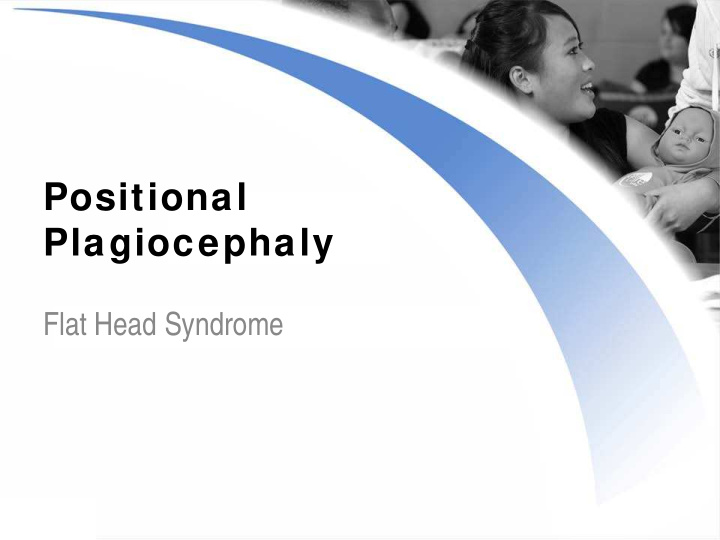



Positional Plagiocephaly Flat Head Syndrome
Positional Plagiocephaly • Also known as flat head syndrome • Most commonly found in infants • Characterized by a flat spot on the back or one side of the head • Caused by remaining in one position for too long Slide 2
Recognizing Flat Head Syndrome Photos courtesy of Junior League of Erie, PA, Inc. – http://www.flatheadprevention.org/ Slide 3
What Causes Flat Head Syndrome? • Passing through the birth canal – usually corrects within six months • Primary cause: Laying in one position for too long, over extended periods of time • Infants with a larger than normal head • Premature infants with weaker than normal neck muscles • Torticollis Slide 4
Torticollis Torticollis occurs when a tight or shortened muscle on one side of the neck causes the head to tilt to the other side, resulting in the infant favoring one side over the other to rest his head. Slide 5
“Back to Sleep” • 1992 campaign to reduce Sudden Infant Death Syndrome • Recommends infant sleep on back rather than tummy • Incidents of SIDS have decreased 50% since the campaign began • Incidents of positional plagiocephaly have increased 13% since the campaign began Slide 6
Prevention • Alternate turning the infant’s head to right or left when you put him to sleep • Put the infant to sleep on alternate ends of the crib • Alternate positions of crib or decorations • Limit time in infant seat/car seat, swings • Cuddle! • Provide supervised tummy time Slide 7
Tummy Time Slide 8
Recommend
More recommend